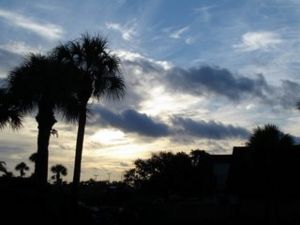User:Yvisser
| Website: | About Me | ||
| Nationality: | Netherlands | ||
| Languages: | English, Spanish, Dutch, French, Portuguese | ||
| Country: | United States | ||
| |||
Contents
My Profile
Background
My name is Yusra Laila Visser. Both Yusra and Laila are Arabic names. The name LailaI was born in The Netherlands, but spent the majority of my childhood in sub-Saharan Africa (Mozambique, Swaziland, and Zimbabwe). I have lived in the United States for some 15 years. While I am a citizen of the Netherlands, I have never really been able to figure out which country, if any, I would truly call home. There are aspects of Dutch culture that are a profound part of my character, which means that I comfortably integrate into the Dutch context when I visit the Netherlands. On the other hand, having experienced a rich childhood in southern Africa, a profound part of my character is connected to the complexities and beauties of life as it is lived in Mozambique. So, home could not really be home if it did not resemble a place like Mozambique. Finally, after living 15 adult years in the United States, I would surely be tempted to call the U.S. my home. In the end, some might suggest that I am unfortunate in not really having a place to call home. I, on the other hand, choose to take the optimistic view that I have a distributed and growing home environment, at once connected and disconnected from specific countries and cultures.
My professional endeavours have been strongly influenced by a lifetime of confrontations with the profound human development needs throughout the world. I conceptualize, develop, implement and evaluate learning and capacity development efforts. For example, I currently coordinate and teach in a program that supports K-12 teacher professional development in technology-mediated instruction and data-driven decision-making. I have also worked on designing and delivering online graduate degree programs, corporate staff development programs, and basic education initiatives for hard-to-reach audiences in developing countries.
Education
Graduate Education
I hold a Ph.D. and Master's of Science in Instructional Systems from Florida State University. As part of my graduate studies, several themes were of great interest to me. These include:
- better understanding the empirical foundations of the field
- conceptualizing the research and practice issues around problems as processes and outcomes of learning
- exploring the role of attitudes and learner motivation in learning, particularly in relation to the scientific disciplines
- developing a sound understanding of the issues around the use of instructional design principles for distance and distributed learning
My doctoral research was focused on the effects of Problem-Based and Lecture-Based instructional strategies on learning, performance, and attitudes in a high school science course.
Undergraduate Education
My Bachelor's degree in International Relations is from American University. During my Undergraduate studies at AU, I specialized in Africa Studies and Political Economy theory. Throughout my undergraduate degree I took advantage of the flexibility in the curriculum to also take a variety of courses in Spanish and French literature, Latin American studies, and US foreign policy.
My Professional Interests
"Sensible" Integration of Technology into Learning and Instruction
I do a lot of work with supporting "sensible" technology integration into K-12 education. When using the term "sensible", I usually have several things in mind, including:
- techniques in which technology allows us to do something we previously were not able to to
- approaches in which the technology provides a clear "value-added" over not integrating technology
- use of the technology in a manner consistent with the audience and context in which the learning is taking place
- application of technology in a way that is harmonious with the overall learning goals.
OER, such as how it is conceptualized by WikiEducator, can play an important role in this type of technology integration. Other resources and tools may also be of interest and value. For example, Google has developed a wide variety of tools and applications that can be leveraged in potentially exciting ways. Check out Some Ideas About Google Apps for Learning and Teaching for some suggestions.
Problem-Oriented Learning
Over the last decade or so, I have had a sustained interest in the issues and opportunities surrounding problem solving as (1) an instructional strategy to mediate learning, and (2) a desired outcome of learning.
Professional
Presently, I work at Florida Atlantic University, coordinating a K-12/University collaborative program supporting capacity development in the adoption of systematic, research-based integration of instructional strategies and technologies for K-12 education. In addition, I serve as vice-president and researcher for the Learning Development Institute (LDI). At LDI, my focus has been on supporting efforts related to the focus areas of Building the Scientific Mind (BtSM) and Problem-Oriented Learning (PoL). Over the years, I have also participated in many of LDI's communities of learning and practice, and have contributed to several of the publications that have emerged from those efforts. Most recently, I contributed a chapter to Learners in a changing learning landscape: Reflections from a dialogue on new roles and expectations (Visser, J. & Valfrey-Vissser, M., Eds.), which was published by Springer in 2008.
In addition to FAU, I have also worked with Instructional Technology/Instructional Design graudate programs at several other universities, including those at Wayne State University, George Washington University, Nova Southeastern University and Florida State University. As a consultant, I have served a broad range of clients, including the World Bank, Verizon Corp, the Department of Homeland Security, Arthur Andersen, the United Nations, and Pearson PCS.
Personal
Photos
My Projects
My Sandbox
My Reflection
--Yvisser 15:19, 31 July 2009 (UTC)
Feedback & Notes from my WikiNeighbours
Hi Yusra. I see that you have been making interesting progress and that your certification level has risen as well. Well deserved! So, congratulations! Keep it up! Your Wiki Neighbor,--Jvisser.ldi 13:59, 12 August 2009 (UTC)
- All the following are in your tutorials, but I put them here for you as a kind of learning shortcut. Earlier posts on bottom, later ones on top.
- Here is another tip. Uploading Pictures. You have a picture on your computer. You want to put it onto a page you are editing. Remember where it is and what it is called on your computer. On your page, in edit mode, you name the file by whatever name you want to call it. Do not use a generic name like "My_picture" or it will get easily mixed up on the WikiEd site. Best is to put your name in the file name you choose. Make sure the extension is one of the many Wiki can handle, like gif, png or jpg. Put it inside two sets of square brackets. At the beginning, type in the word image followed by a colon followed by your image file name. Then save and that puts your page into publishing mode, and you have a web page again. The image file name should appear in red, indicating that it has not been used already. Click on it and a new page will appear that has easy instructions abut uploading the file from your computer. Do it. The image gets its own page. When you see it, go to the bottom of that image page; click on your page name and there it will be.--Phil Bartle 16:13, 29 July 2009 (UTC)
- Another tip is to borrow from your Wiki neighbours. Browse around other User pages. If there is anything you like, just copy it and paste it in to your user page. Make any modification you need, and there you are. --Phil Bartle 03:15, 28 July 2009 (UTC)
- If you have not seen it yet, I recommend that you look at the youtube video clip on Wikis. In WikiEd, as in the video, the most important buttons are edit and save. A third button, Link, is not quite the same on WikiEd. To make a sub page, in edit mode, you simply give it a name. put forward slashes around it, then two square brackets in front and after the result. When you save, the word will be in red. Click on it and it will tell you there is no such page. As soon as you start editing, the sub page is created. --Phil Bartle 03:05, 27 July 2009 (UTC)

